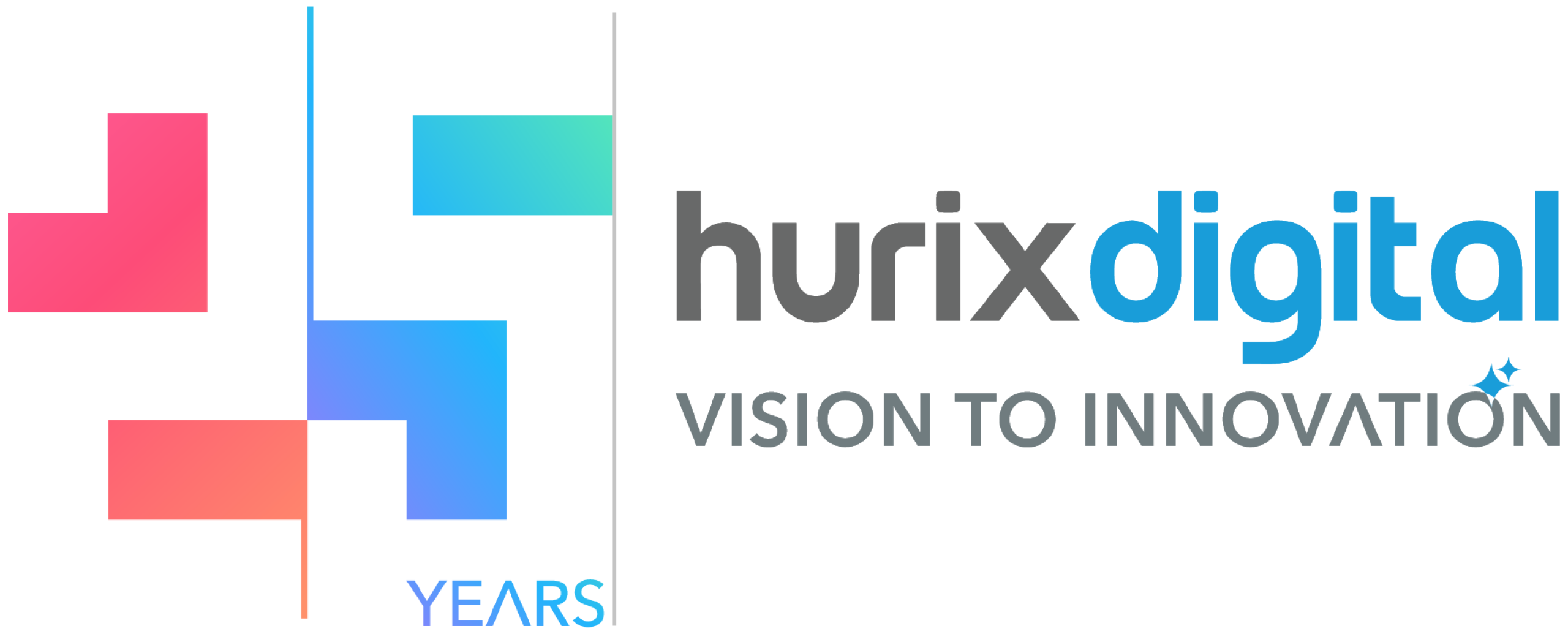
What Nobody Tells You About Enterprise Staffing Solutions Until It’s Too Late
Enterprise staffing solutions are where good intentions go to die. Every company starts with noble goals about “strategic talent acquisition” and “workforce optimization.” Six months later? They’re desperately calling recruiters at 11 PM because three developers quit, and the product launch is next week.
The disconnect between enterprise staffing solutions’ theory and practice could fill a library. McKinsey publishes reports about “talent transformation.” Harvard runs case studies on “human capital strategies.” Meanwhile, actual human resource (HR) departments are drowning in requisitions, fighting with procurement about vendor contracts, and explaining to the CEO why that “simple” hiring request will take three months. The ivory tower meets the factory floor, and the factory floor wins every time.
Scale breaks everything that works for smaller companies. That boutique recruiting firm that found you amazing engineers when you had 50 employees? They can’t handle 500 open positions across twelve countries. The internal referral program that drove 60% of hires? Becomes a nepotism nightmare at enterprise scale. The hands-on interviewing process everyone loved? Physically impossible when you’re hiring 89 people per month.
This blog sheds light on ten questions that expose the gap between enterprise staffing aspirations and reality. Talent acquisition leaders are considering careers in farming because of these challenges, not hypotheticals from consultants.
Table of Contents:
- How Do Enterprise Staffing Solutions Align With Long-Term Business Strategy?
- What is the True ROI of Our Enterprise Staffing Investments?
- How Can We Effectively Close Critical Skill Gaps Across the Enterprise?
- Can Enterprise Staffing Solutions Truly Adapt to Rapid Scaling Needs?
- How Does AI Transform Enterprise Staffing for Future Workforce Needs?
- What are the Hidden Compliance Risks in Our Current Staffing Strategy?
- How Do We Ensure a Superior Candidate Experience Enterprise-Wide?
- How Do We Optimize Multi-Vendor Enterprise Staffing Relationships Strategically?
- How Can Data Analytics Predict Future Enterprise Talent Requirements?
- How Do Staffing Solutions Contribute to Enterprise Culture and Retention Goals?
- Wrapping Up
How Do Enterprise Staffing Solutions Align With Long-Term Business Strategy?
Here’s a fun exercise: ask your CEO about the five-year business strategy. Now ask your HR head about the five-year staffing strategy. Watch them describe completely different companies.
The business strategy says “AI-driven personalization.” The staffing strategy is still hiring Java developers because that’s what the 2019 requisition said. The business wants to expand into the Asia-Pacific. Staffing doesn’t even have recruiters who speak Mandarin. There is a structural disconnect, not a malicious one. The business strategy changes quarterly. Staffing infrastructure takes years to build.
Most enterprises treat staffing like ordering office supplies. Need developers? Submit a req. Need them faster? Yell at HR. This transactional mindset guarantees strategic failure. By the time you hired for yesterday’s needs, tomorrow’s requirements had completely changed. That massive Salesforce you built for enterprise accounts? The strategy just shifted to product-led growth. Those 37 data analysts you recruited? The company just bought an analytics startup with better tools.
Strategic alignment requires something most enterprises hate: planning. Not the fake planning where everyone makes PowerPoints about “synergies.” Real planning. What skills will we need in 18 months? Which roles become obsolete when we automate that process? How does our talent pipeline look in markets we’re entering next year? This stuff is hard. It’s easier to just react to whatever fire is burning today.
What is the True ROI of Our Enterprise Staffing Investments?
CFOs love asking about return on investment (ROI) on enterprise staffing solutions. HR loves making up numbers to answer them.
“Our average cost-per-hire is $4,000!” Okay, but what about the six months that the position stayed empty? The contractor you paid triple rates to fill the gap? The project delays? Is the customer churn from being understaffed? That $4,000 hire cost you $10,000 in hidden damages.
Enterprise staffing solutions’ ROI isn’t just about what you spend, it’s about what you lose, too. That sales territory without coverage for three months? Competitors grabbed those accounts. Is that engineering team missing a tech lead? They built technical debt you’ll pay interest on for years. The customer success role you couldn’t fill? Check your churn rates. The correlation is depressing.
Most companies miss the fact that staffing ROI compounds. When a great hire is made, it attracts other great hires. It mentors juniors, improves processes, and prevents problems you’ll never know existed. On the other hand, a bad hire demotivates others, creates conflicts, and requires excessive management. The ripple effects matter more than the initial splash.
We tracked one senior hire’s impact for two years. Direct contribution? Maybe 2x their salary. Indirect impact? They restructured our entire development process, reducing deployment time by 60%. They mentored three juniors who became team leads. And they identified a security flaw that could’ve cost millions. Try putting that in your ROI spreadsheet.
How Can We Effectively Close Critical Skill Gaps Across the Enterprise?
Every enterprise has the same skill gaps: cloud architects, data scientists, AI specialists, and cybersecurity experts. Everyone needs them. Nobody has enough. The talent literally doesn’t exist in sufficient quantities. The situation is similar to everyone suddenly needing unicorn horns—bidding higher does not generate more unicorns.
Throwing money at the problem is no longer a viable solution. Those cloud architects you’re offering $200K? Amazon will offer $300K plus stock options. That data scientist you flew first-class for interviews? Google sent a private jet. You’re playing a game you can’t win.
Internal mobility gets criminally underutilized. That business analyst who scripts everything in Python? Potential data engineer. The support engineer who keeps fixing security issues? Future security specialist. The project manager who actually understands the technical architecture? Maybe they should be a technical product manager. But most enterprises make internal transfers harder than external hiring. Six approvals, committee reviews, political nightmares. So talent leaves instead of moving.
Skills adjacency matters more than exact matches. Can’t find React developers? Hire Angular developers and train them. Need cloud architects? Promote your best infrastructure engineers and send them to the AWS certification. The person who can learn what you need is often better than the person who already knows it but can’t adapt to your environment.
Can Enterprise Staffing Solutions Truly Adapt to Rapid Scaling Needs?
“We need to hire 300 people in six months.” Every enterprise staffing leader has heard this. Usually, right after a hiring freeze. Apparently, business growth follows mood swings rather than logical progressions.
Traditional staffing models break at scale. That careful interview process with six rounds? Impossible at 70 hires per week. Is the boutique recruiting firm of amazing quality? They max out at 10 placements monthly. Your internal recruiting team of five? They’re already crying in the bathroom. The enterprises that scale successfully treat hiring like manufacturing. Standardized processes, quality checkpoints, parallel workflows. Not romantic, but effective. They have interview rubrics that actually mean something. Structured evaluation criteria. Automated scheduling. It feels corporate because it is corporate. But it works at scale when artisanal hiring doesn’t.
Flex capacity is everything. You can’t maintain recruiting infrastructure for peak hiring. You also can’t build it overnight when needed. Smart enterprises maintain core recruiting teams supplemented by scalable vendors like Hurix Digital. When hiring surges, you can rely on vendors like us.
Geographic constraints kill scaling. Need 100 engineers, but only hiring in San Francisco? Good luck. Open to remote? Now you’re fishing in an ocean instead of a pond. But remote at scale requires different infrastructure. How do you onboard 50 remote employees simultaneously? How do you maintain culture across 20 time zones? The problems aren’t impossible, but most enterprises haven’t solved them.
How Does AI Transform Enterprise Staffing for Future Workforce Needs?
Everyone’s talking about AI replacing recruiters. The reality is weirder and more interesting. AI will make recruiters cyborgs, not robots. The best recruiters now use AI for sourcing, initial screening, and scheduling. They spend time on actual human interaction instead of Boolean searches and calendar Tetris. One recruiter told me she went from 20% human interaction to 80% after implementing AI tools recommended by Hurix Digital. That’s transformation, not replacement.
But AI bias is real and spectacular. That model was trained on your “Successful employee” data? It learned that success means “Went to the same five schools” and “Worked at the same three companies.” Congratulations, you’ve automated discrimination. Predictive analytics gets oversold. “Our AI predicts employee success with 87% accuracy!” Based on what data? Historical performance in a different economy with different technologies and different job requirements? Past performance predicts future results only if the future resembles the past. Spoiler: it won’t.
AI’s real opportunity lies in matching, not selection. Understanding the nuanced fit between candidate capabilities and role requirements. Not just “Has Java experience” but “Learns quickly, communicates well, and thrives in ambiguous situations.” AI can process hundreds of subtle signals humans miss. But it needs human oversight to ensure those signals actually matter.
What are the Hidden Compliance Risks in Our Current Staffing Strategy?
Compliance is where staffing strategies go to die. You think you’re compliant until the audit happens. Then you discover horrors.
GDPR turned recruiting into a minefield. That database of candidates from 2015 is personal data you’re not allowed to keep. Is the AI tool analyzing LinkedIn profiles? Processing data without consent? Sharing candidate information with hiring managers? You’d better have the right agreements in place. One company we know had to pay penalties of a few million euros for keeping rejected candidate data too long.
Pay equity laws keep evolving. California bans salary history questions. Colorado requires posting salary ranges. New York City wants salary ranges in job postings. Each law has different requirements, penalties, and loopholes. Your recruiters need law degrees to stay compliant. Most don’t have them.
International compliance makes domestic look simple. Hiring in Germany? Works councils have input. Hiring in France? Good luck firing anyone. Hiring in Brazil? The labor laws change monthly. Each country has different requirements for contracts, benefits, and termination. One wrong move and you’re in court for years.
How Do We Ensure a Superior Candidate Experience Enterprise-Wide?
Candidate experience at enterprise scale is like customer service at the DMV. Everyone knows it’s terrible, and nobody seems able to fix it. The black hole effect is real. Candidates apply and hear… nothing. For weeks, sometimes forever, they don’t know if their application was received, reviewed, or rejected. One candidate told me they got a rejection email two years after applying!
The interview scheduling dance wastes everyone’s time. Five emails to coordinate one phone screen. The recruiter suggests times. The candidate responds. Those times no longer work. New times proposed. The hiring manager is now unavailable. This seems like planning a wedding with people who hate each other. By the time the interview happens, enthusiasm is gone.
Ghosting goes both ways now. Companies ghost candidates after interviews. Candidates’ ghost companies before start dates. Everyone complains about unprofessionalism while being unprofessional. It’s mutually assured destruction of common courtesy. One client we were talking to had 15% of accepted offers not show up on day one.
Fixing the problem won’t be difficult, but it will be a bit costly. Communicate clearly and frequently. Set expectations upfront. Provide realistic timelines. Close the loop on every application. Basic human decency, scaled up. But it requires investment in people and systems that most enterprises are hesitant to make.
How Do We Optimize Multi-Vendor Enterprise Staffing Relationships Strategically?
A lack of control can make managing multiple staffing vendors difficult, time-consuming, and chaotic. The key is treating vendor management as a strategic function, not an afterthought. Start by segmenting your needs: Is Vendor A best for IT contractors? Is Vendor B stronger in regulatory-heavy roles like healthcare compliance? Are there niche partners who “get” what you do in oil & gas or academic hiring?
Don’t underestimate the value of honest feedback. Vendors can’t fix what they don’t know is broken. And don’t be afraid to renegotiate terms as your needs change. In rapid scaling, you may need one vendor to take the lead; during steady-state, you might spread the risk.
One warning: avoid “vendor sprawl.” Too many partners dilute accountability. The best practice? Choose an experienced TaaS partner like Hurix Digital, who knows your business, with a clear escalation path and regular reviews. Consider us as a collaborator, not just a supplier of talent.
How Can Data Analytics Predict Future Enterprise Talent Requirements?
Everyone has staffing data. Almost nobody uses it intelligently. Your applicant tracking system (ATS) has millions of data points. Application sources, conversion rates, time-to-hire, rejection reasons, and performance ratings. It’s a goldmine of insights. But most companies use it to generate the same five reports they’ve run since 2010. Average time-to-fill by department. Cost-per-hire by quarter. Source effectiveness by role. Boring, backward-looking, barely useful.
Predictive analytics requires connecting disparate data sources. Combine ATS data with performance management systems, learning platforms, and business metrics. Suddenly, patterns emerge. That specific combination of skills and experience that predicts sales success. The interview scores that correlate with long-term retention. The referral sources that produce top performers. But connecting these systems? Technical nightmare most enterprises avoid.
Skills forecasting is where analytics can help, but rarely does. What skills will we need in two years? Which capabilities become obsolete? Where are the emerging gaps? This requires combining internal data with external market intelligence. Only a handful of companies like Hurix Digital have the right analytical maturity to do this well.
How Do Staffing Solutions Contribute to Enterprise Culture and Retention Goals?
Culture fit is the excuse for every biased hiring decision ever made. “They’re brilliant but wouldn’t fit our culture.” Translation: They’re different from us, and we aren’t really comfortable with them.
To be honest, the best hires seldom match your culture perfectly. But they tend to enhance it. They bring new perspectives, challenge assumptions, and push boundaries. But most enterprise hiring processes screen for conformity. Same schools, same backgrounds, same thinking. Then leadership wonders why innovation stagnates.
Retention starts with honest recruitment. Stop overselling roles. That “Exciting opportunity to transform our digital infrastructure” might actually be “maintaining legacy systems while fighting for budget.” Candidates who join based on false promises leave within a year. Those who join with realistic expectations often stay for years. Honesty is the best retention strategy, but marketing-speak tends to dominate job descriptions.
Culture change through hiring is possible, but painful. Want to become more innovative? Make sure you hire innovative people and protect them from corporate antibodies. Want better collaboration? Hire collaborators and change your promotion criteria. Want customer focus? Engage people from customer-facing roles and listen to them. But this requires intentional, sustained effort that most enterprises can’t maintain through quarterly earnings pressures.
Wrapping Up
There is no magic cure for the enterprise staffing challenges we have discussed. They are daily realities that demand practical solutions from partners who understand the complexity of scale and the nuance of specialized talent needs.
After years of watching companies struggle with the same recurring problems of vendor sprawl, compliance nightmares, and strategic misalignment, one thing becomes crystal clear: Success requires a partner who brings more than just a database of resumes.
This is where the right Talent as a Service (TaaS) model transforms staffing from a reactive scramble into a strategic advantage. Consider how Hurix Digital’s TaaS approach recently helped a global manufacturing innovator accelerate project completion by 28 percent by providing precisely matched talent with the right skills at the right time. This wasn’t about flooding them with candidates but about understanding their unique technical requirements, cultural dynamics, and scaling patterns. When your staffing partner combines deep industry expertise with flexible delivery models and proven methodologies, those impossible hiring targets suddenly become achievable milestones.
Explore how Hurix Digital’s TaaS can transform your talent acquisition strategy by scheduling a call with one of our TaaS experts.

Vice President & SBU Head –
Delivery at Hurix Technology, based in Mumbai. With extensive experience leading delivery and technology teams, he excels at scaling operations, optimizing workflows, and ensuring top-tier service quality. Ravi drives cross-functional collaboration to deliver robust digital learning solutions and client satisfaction
 Upcoming Masterclass | Build an Army of Brand Evangelists using Training & Development | November 20th, 8:30 AM PDT | 11:30 AM EDT | 10:00 PM IST
Upcoming Masterclass | Build an Army of Brand Evangelists using Training & Development | November 20th, 8:30 AM PDT | 11:30 AM EDT | 10:00 PM IST
